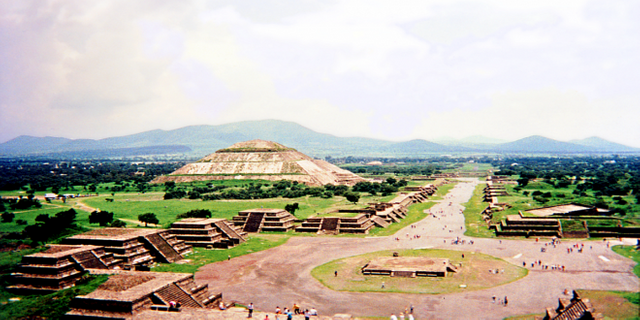Top 10 Insights Into The Mysteries Of The Aztec City Of The Gods
Top 10 Insights Into The Mysteries Of The Aztec City Of The Gods
Teotihuacan, at its prime, was one of the largest cities on earth, filled with massive pyramids that rivaled the wonders of the Egyptian pharaohs—and everything about it is a mystery today. Little to nothing was written down to tell the story of Teotihuacan, but little hints in the ruins left behind have uncovered some of its past.

When the Spanish Conquistadors arrived in America and saw Teotihuacan for the first time, the Aztecs were living there. They had moved their people in and taken it as a part of their empire—but they didn’t build it. It had stood for 1,000 years before the Aztecs and 500 years before the Maya ever came to Mexico.Nobody knows who built it. A group called the Toltects tried to take credit, but the city had been in Mexico for longer than they had, as well. Some of the archaeology, though, has left behind a few little hints of where it came from.The city was started in 400 BC, built around a cave carved into the earth by a flow of lava. The people who found that cave seemed to have believed it was a holy spot. They set up a temple on top of it. Gradually, it seems, little settlements were built around it, added by pilgrims who came out to see the holy cave.
9 A Volcano Made It A Metropolis
That small settlement, in time, became a religious landmark—and it’s believed that it took the death of thousands to make that happen. Around the time Teotihuacan started to boom into a city, a volcano in Cuicuilco erupted. A huge settlement of people there was wiped out, and the scattered survivors fled out into the wilderness in search of a new home. Soon, they made their way to Teotihuacan.Their lives, though, had changed.
They’d now seen the power of the natural world and the destruction it could wreak on ordinary lives. Their lives, like never before, were focused on the gods. Their new home, Teotihuacan, became more than just a city. It was a desperate shelter against the powers of nature, built to earn the protection of the gods.The pyramids, historian Esther Pasztory believes, were built to imitate the volcano that had destroyed their home. It was meant to show the people that priests had the powers of the gods and that they could keep them safe. And it may have been the start of a new order of religious devotion across the whole country.The refugees in Teotihuacan, once they’d settled in, would make treks back to their old home in Cuicuilco. There, they left behind stone figures built in their new city in tribute to the place their ancestors called home.
8 They Performed Human Sacrifices
The gods of Teotihuacan craved blood. They weren’t all the same gods as those of the Aztecs or the Mayas, and there’s a lot we don’t know about them—but it’s clear that they believed that their gods demanded human sacrifices.In the tunnel under the Pyramid of the Sun, four burial sites filled with human sacrifices have been found, made when the pyramid was built. They aren’t all adults.
Three of the burial sites left behind have the remains of dead children who had been sacrificed to appease the gods. It’s believed that a new set of bloody and brutal sacrifices were given to the gods as each new layer of the pyramids was built. This wasn’t only at the Pyramid of the Sun. Under the Pyramid of the Moon, they buried a whole array of wild animals, along with 12 human corpses—10 of which are missing their heads.
7 The Rituals Of The Pyramid Of The Sun
They may have done horrible things to create them, but those pyramids were architectural wonders. They were two of the largest buildings in the world. Even today, the Pyramid of the Sun is still the third-largest pyramid in the world. It was built over the sacred cave that started the city, the place they believed the Sun was born.
read more
http://www.nmws.us/top-10-insights-into-the-mysteries-of-the-aztec-city-of-the-gods/